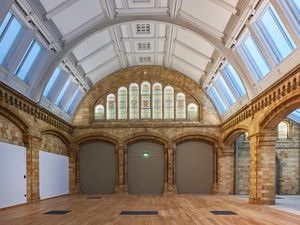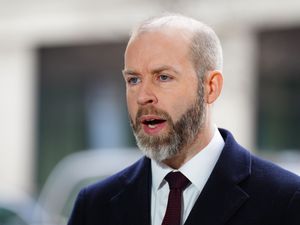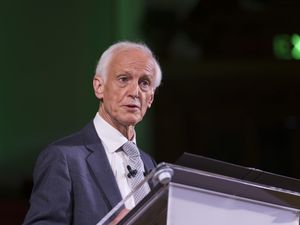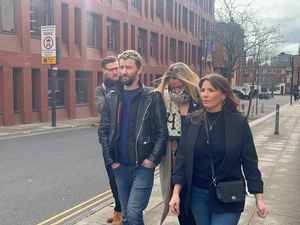Natural History Museum’s first fixed gallery in years to explore ‘broken planet’
The world-famous London museum will launch the programme in April, including a new gallery and a programme of youth-focused events.

The Natural History Museum’s first permanent gallery in nine years will explore the biggest challenges facing Earth and how people can “make change”.
The world-famous London museum announced the Fixing Our Broken Planet project on Tuesday, which will include the new permanent gallery as well as a programme of events and activities aimed at creating environmental advocates.
The new gallery will be free for all visitors when it opens on April 3, and marks the first such space to open at the museum since 2016.

It will feature pioneering research from the museum’s scientists and more than 250 specimens that tell the story of humanity’s relationship with the natural world, including a Sumatran rhinoceros, parasitic worms and whale’s earwax.
Displays will show how fungi is used to fertilise crops, how bacteria can be harnessed to extract copper from mine waste, how bison are helping to engineer forests in the UK to store more carbon and how vital DNA analysis on mosquitos is being used to fight mosquito-borne diseases, such as malaria.
Visitors will also be presented with practical, evidence-based advice from environmentalists and young changemakers on actions they can take to combat the planetary emergency as our demand for food, materials and energy soars.
Museum director Dr Doug Gurr said: “Our scientists have been working to find solutions for and from nature.
“Fixing Our Broken Planet places this research at the heart of the museum, allowing us to offer visitors positive ways in which they can act for the planet.

“By combining the inspiring science and advocacy found in the gallery with the voices of Generation Hope changemakers, we’re showing that we all have the power to make change.”
The gallery will be located in the 1881 Waterhouse building, which required full restoration.
The museum is aiming to revive the original Victorian features while using sustainable materials and methods to bring the space back into public use.
After the gallery has opened, the museum’s youth climate programme, Fixing Our Broken Planet: Generation Hope, will host a series of free workshops, panels and talks created in collaboration with young climate leaders from across the world between April 29 and May 3.
The Department for Culture, Media and Sport’s (DCMS) Public Bodies Infrastructure Fund provided funding for the project.
Arts minister Sir Chris Bryant said: “To create effective lasting change for the planet we must inspire all generations.
“This new, free, permanent gallery, part-funded by DCMS, will showcase research from the brilliant scientists at the Natural History Museum, helping to educate, challenge and entertain the public on the natural world while demonstrating how we can all make a difference.”

Support also came from Wellcome, GSK and Orsted, as well as the Natural Environment Research Council (NERC), part of UK Research and Innovation, the Government research and development funding body, which provided a £1.64 million grant.
NERC executive chairwoman Professor Louise Heathwaite said: “The innovative new gallery will enable visitors to understand the biggest environmental challenges facing our planet and how we can address them.
“It will highlight the incredible work of our scientists who are finding solutions for a sustainable future.
“We are delighted to be partnering on this project, which demonstrates how positive action and the strength of working together are the key to protecting our planet.”





